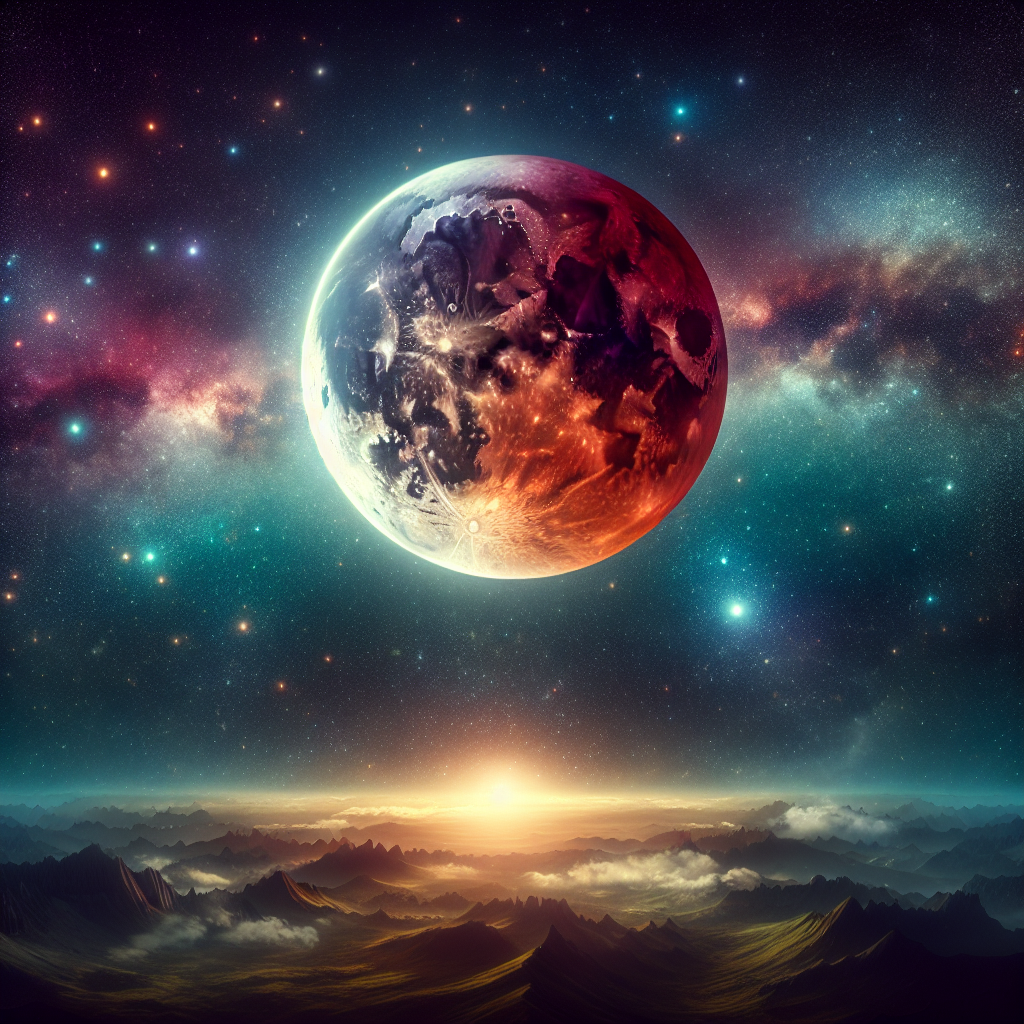On the evening of September 7, skywatchers around the globe will be treated to a rare and mesmerizing astronomical performance: the second—and also the last—total lunar eclipse of the year. During this celestial alignment, the moon will be transformed into a radiant crimson orb, commonly referred to as a ‘blood moon,’ casting its striking presence across vast stretches of the Earth’s night sky. For many observers, this remarkable event will not simply be an opportunity for passive viewing but also a moment of awe and reflection, as it illustrates the elegant interplay of cosmic motions that govern our solar system.
A total lunar eclipse occurs only under very specific circumstances. The Earth must position itself directly between the sun and a full moon, creating a scenario where the moon passes through the Earth’s shadow. If one were to imagine this alignment, the Earth serves as a giant shield, temporarily blocking the direct sunlight that would normally illuminate the lunar surface. Yet, intriguingly, the moon does not vanish into complete darkness. Rather, it takes on an otherworldly glow of deep red and orange hues, a consequence of a physical process known as Rayleigh scattering. This phenomenon is the same underlying mechanism responsible for the coloration of sunrises and sunsets here on Earth, where the atmosphere redirects light based on the varying wavelengths of different colors.
Although sunlight appears uniform and white to the human eye, it is in fact a delicate blend of many colors, each corresponding to a distinct wavelength along the visible spectrum. When rays of sunlight encounter Earth’s thick atmosphere, these wavelengths interact differently depending on their length. The shorter wavelengths, which correspond to colors like violet and blue, scatter easily in all directions and are predominantly diffused away. The longer wavelengths, such as red and orange, are far less affected and instead bend gently around Earth, traveling through its atmosphere before being cast into the planet’s shadow. It is precisely this redirected red light that bathes the lunar surface during an eclipse, painting it in glowing shades of copper and crimson rather than allowing it to fade into invisibility.
This is the second time in the year viewers have had the opportunity to witness a total lunar eclipse. The first took place in March and was best observed from the United States. However, those situated in the Americas will, regrettably, be unable to view this September eclipse directly. Instead, the regions that enjoy the most favorable vantage point for the upcoming spectacle include parts of Asia, central and eastern Africa, and the entirety of Australia. During the peak phase, known as ‘totality,’ the moon will appear deeply immersed in Earth’s shadow, offering a long-lasting and dramatic transformation to anyone fortunate enough to be in the viewing zone.
For those eager to pinpoint the precise timing of the event for their own region, resources such as Timeanddate.com provide detailed maps illustrating which parts of the world will experience totality in its entirety. According to the astronomical schedule, the stage of totality will officially commence at 17:30 Coordinated Universal Time (UTC) on September 7. Roughly forty minutes later, at 18:11 UTC, the moon will reach its fullest immersion in Earth’s shadow, producing the event’s most visually captivating moment. The totality then continues for another forty minutes before gradually fading as Earth’s shadow releases its crimson hold. Observers will also notice the preceding and subsequent partial phases of the eclipse, in which the moon appears partially shadowed, offering a gradual progression into and out of the spectacle.
Those unable to observe the eclipse in person need not be disheartened. Thanks to modern technology and global collaboration, opportunities exist to watch the phenomenon unfold in real time from anywhere. The Virtual Telescope Project, a renowned initiative spearheaded by the Italian astrophysicist Gianluca Masi, will present a live broadcast of the blood moon and its associated eclipse on YouTube, making the experience accessible to an international audience.
Adding further allure to September’s total lunar eclipse is its timing in relation to the moon’s orbit around Earth. This event occurs less than three days before the moon reaches perigee, the stage in its elliptical orbit when it is closest to our planet. As a result, the moon will appear marginally larger to viewers on Earth, enhancing the dramatic visual impact of the eclipse and intensifying its already awe-inspiring character.
This celestial rendezvous on September 7 will mark the last total lunar eclipse for more than a year. The next opportunity to witness such a phenomenon will not arise until early March 2026. Fortunately for those in the United States, visibility during that future eclipse will extend across North America, as well as Australia and parts of East Asia, ensuring a widespread opportunity to marvel at the mysterious yet predictable elegance of the cosmos.
This extended report was originally published by WIRED Italia and later translated from Italian, ensuring that audiences worldwide may partake in the excitement of the impending blood moon and total lunar eclipse event.
Sourse: https://www.wired.com/story/how-to-see-the-total-lunar-eclipse-and-blood-moon-on-september-7/



